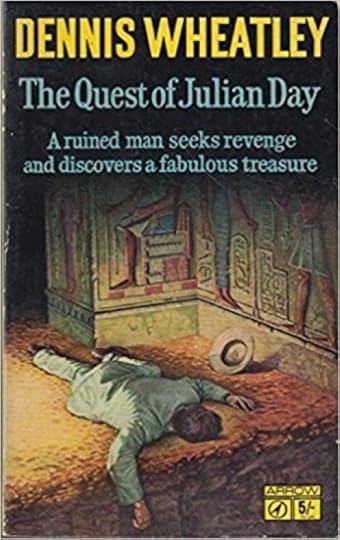Bad Baronesses and Cruel Countesses: Titled Aristocratic Antagonists in Classic English Fiction: The Women
In my last post, I linked a very funny article about bad titled people in fiction.
https://tvtropes.org/pmwiki/pmwiki.php/Main/AristocratsAreEvil
After that, I discussed a few examples of morally reprehensible barons, counts and – usually the worst of the lot – baronets in classic English Literature.
I saved the discussion of Bad Baronesses and Cruel Countesses for this separate post. The question of the female equivalents is a difficult one. Sadly, there are few countesses and baronesses in classic stories who go about being bad on their own account. However, in accordance with the traditional female role, a large number of them do it to further their husband’s careers. An extreme example is Lady Macbeth.
There are also Goneril and Regan in ‘King Lear’. As the king’s daughters, are about as high up on the social scale as you can get. They were not called ‘princesses’, however, as that was a term not much used until much later. They are completely immoral, conniving, sensuous, and unscrupulous. Though they combine against their sister Cordelia, whose honourable qualities they detest, they soon fall out in their mutual jealousy over the embittered son of the Duke of Gloucester, Edmund.
I suppose they admire him so much because he is as bad, or worse, than they are. Edmund doesn’t have a title through being illegitimate, and acts as wickedly through his chagrin over that as any titled villain in literature.
I may be overlooking some obvious examples, so I hope that readers will correct me if I am wrong, but generally, aristocratic women in classics who decide to be bad of their own accord tend to be sirens. You don’t get much in the way of Mad Scientist Baronesses, say, or Mass Murderer Countesses like the real life Hungarian Countess Elisabeth Bartory. There are, of course, Dracula’s three vampire wives, but they might actually be said to be furthering his career in their own way.
Another vampire countess siren is of course, Carmilla, Countess of Karnstein, in Sheridan le Fanu’s novel ‘Carmilla’. She is acting on her own accord, and seems – intriguingly for the era – to be more attracted to female rather than male victims. How far Sheridan le Fanu’s depiction of her as having lesbian urges was a conscious one, is unclear.
In the mundane world, Lady Davers in Samuel Richardson’s ‘Pamela’ (1740) is Mr B’s sister, even more proud and dictatorial than he is. In fact, her attitude reflects his own – and typical of the attitude of the upper class towards servant maids –until he becomes ‘converted’ from a would-be rapist into a devoted husband.
Lady Davers’ encounters with Pamela are purely ridiculous, made tolerable only by the elegant language of the eighteenth century: ‘Creature, said she, art thou to beg an excuse for me? Art thou to implore my forgiveness? Is it to thee that I am to owe the favour, that I am not cast headlong from my brother’s presence? Begone to they corner, wench…’
Note how Lady Davers addresses Pamela using the archaic English familiar ‘art thou’. In addressing Pamela as a ‘wench’, Lady Davers is not only showing that she is of a low social status, she is also – and this is a concept which those who are accustomed to modern democratic ideas about equality find hard to realise – she is implying that she is of too low a social caste to aspire to virtue. Maids were not expected to value their spiritual welfare sufficiently to value it above pleasing their master. That was the subversive aspect of Richardson’s message.
There is ‘Lady Booby’ in Henry Fielding’s ‘Joseph Andrews’. Her name, of course, has nothing to do with coarse references to her pulchritude, referring to a term used at the time for a fool. Critics of Samuel Richardson’s ‘Pamela’ jeered at the ineffectual if sexually abusive master, Mr B, as ‘a booby’ most notably in the scurrilous and hilarious spoof ‘Shamela’.
Lady Booby is not a fool herself, but the wicked widow of one. Sadly, she frankly isn’t very interesting. Like the other women in Fielding’s novels, she is not a developed or rounded character. She pursues her footman, the hero Joseph Andrews – written as a virtuous male equivalent of his supposed sister Pamela – with suitable abuse of power, and is frankly made of cardboard.
Slightly off topic, I think I would have found the novel funnier if, as a spoof, it had shadowed the plot of the original novel, where the author provides Pamela with every sort of feeble excuse for remaining in Mr B’s household before fleeing to safety.
Another villainess of title – a sort of earthly bad fairy- is the earl’s daughter Lady Catherine de Bourgh in Jane Austen’s ‘Pride and Prejudice’. She is astounded by the independence of mind that Elizabeth Bennet shows in refusing to confide to her whether or not she would accept an offer of marriage from Lady Catherine’s nephew, Mr Darcy. Lady Catherine’s ‘dignified impertinence’ is abandoned and she rages about ‘The upstart pretensions of a young woman without family, connections, or fortune’.
Mr Darcy, of course, shares her haughtiness until he is taught some humility by Elizabeth.
It is intriguing that the aristocrats and even baronets in Jane Austen – unlike many in the genre of Regency Romance she inspired – are a generally unsympathetic lot. This may reflect her own conviction that the landed gentry – the class to which she belonged herself – were generally were more socially responsible and led more worthwhile existences, strongly connected as they were with the land and the local population.
It is notable that there are no aristocrats involved in the Gothic excesses of Emily Bronte’s ‘Wuthering Heights’, only the landed gentry of the Yorkshire Moors, as represented by the Lintons and the Earnshaws.
Aristocratic female antagonists seemed, intriguingly, to become less independently evil as the nineteenth and twentieth centuries went on, in popular fiction at least.
The siren Lady Barbara Childe in Georgette Heyer’s ‘An Infamous Army’ (1935) is seen as outrageous, but it wouldn’t be very hard to shock a society which gossips about a woman wearing polish on her toenails. She is also fond of taking drugs and breaking the hearts of admirers and rivals, but is really only an anti-heroine who repents at the end.
I remember being very impressed at thirteen by Princess Oonas Shahamalek in one of Dennis Wheatley’s novels, ‘The Quest of Julian Day’ (1937).

Small, but extremely voluptuous, she is still in her early twenties, though a widow, and a siren in the best tradition of Cleopatra, quite happy to enjoy and later callously to abandon lovers.
She is used by the villains of the piece to the seduce ‘Julian Day’. ‘Julian Day’ is in fact, a disgraced aristocrat whose real name is Hugo Julian du Crow Fernhurst, and an unofficial spy himself.
This encounter takes place in a desert tent in Egypt. The agreement is that after this bit of fun – which involves a game of catch with Princess Oonas only wearing a filmy nightdress and some intoxicating perfume – she will then have him murdered in his sleep. However, she finds him such a good lover that she decides to keep him alive after all for more of the same. Julian Day wakes up to hear her instructing her men that she has decided she likes him after all, and the murder is off. When the assassins arrive, she starts shooting at them.
Later, overcome with jealousy of another women on Julian Day’s proposed treasure hunting expedition, and unable to face the threat of losing him, as she sees it, to another, she traps him in a tomb, leaving him to die of thirst.
He escapes. Seeing him later, she assumes he is an evil spirit, and runs out into a sandstorm to a certain death. I assume Dennis Wheatley, who was a great believer in the Law of Karma, wrote this as part of its workings. I thought this was rather a shame. I much preferred her to her rival, Sylvia Shane, despite her treacherous nature. As a take on a ‘desert romance’ I definitely preferred that episode to the ‘He’s a Rapist, But I Love Him’ approach of ‘The Sheik’.
Of course, there are a large number of bad female aristocrats in modern fiction, especially in fantasy, but this post being about classic novels, I shall finish this post with the magnificently wicked Princess Oonas.
[image error][image error][image error][image error][image error]


